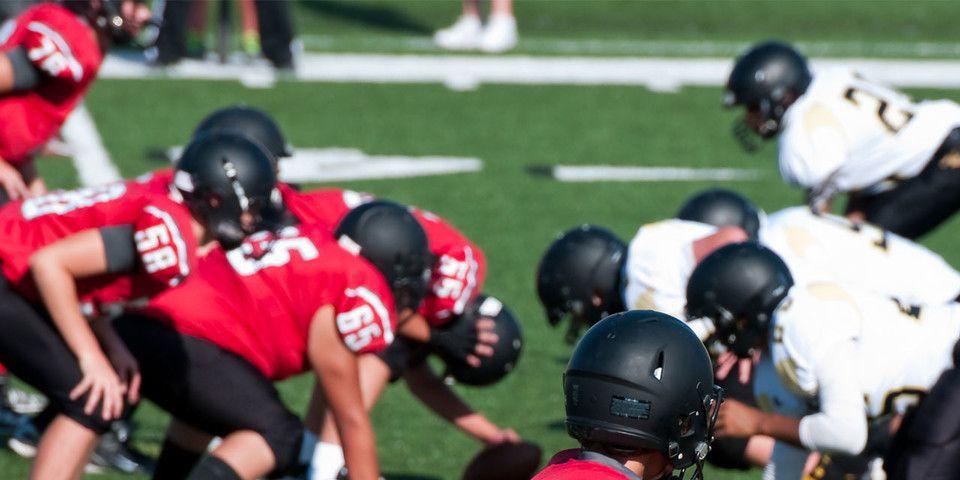Avoiding Shoulder Injuries on the Football Field
Rothman offers the best available treatments for football shoulder injuries.
What defines a good football season? Victories on the field, personal progress, and improved teamwork are all indicators of success on the field.
But what about a low or reduced injury count? Because of the injury-prone nature of the game of football, injury avoidance is perhaps one of the most important indicators of a successful football season.
Shoulder injuries are one type of injury to which football players are especially prone. As a leading provider of sports medicine, the orthopaedic specialists at Rothman Orthopaedic Institute have exceptional knowledge and experience treating shoulder injuries that are associated with football activity. We’ve compiled this helpful guide to the most common shoulder injuries to help acquaint you with the specific injury risks of football and the measures you can take to prevent them.
Seven Common Football Shoulder Injuries
Why are shoulder injuries so prevalent among football players? There are numerous risk factors at play. Most important among them are the aggressive, impact-heavy nature of football plays and the intense, repetitive throwing motions prominently featured in certain positions (most notably, quarterback).
Whether you’ve experienced a shoulder injury from fall or from the gradual, mounting stress of throwing activities, you’ll want to familiarize yourself with your shoulder injury diagnosis. Listed below are seven of the most common types of shoulder injuries football players experience:
-
Shoulder Tendonitis
Tendonitis is the irritation and inflammation of the tendons within the shoulder, typically caused by excessive throwing motions. Common among quarterbacks, the biceps tendon is most commonly affected by tendonitis. -
Shoulder Dislocation
A shoulder dislocation may occur either from an overly strenuous arm movement or a traumatic impact with another player or the ground. Shoulder dislocations involve the separation of the humerus ball from the scapular socket. -
Shoulder Separation
Shoulder separations are more severe than dislocations; they occur when the ligaments attaching and stabilizing the collarbone are partially or fully torn from the shoulder blade. -
Anterior Shoulder Instability
Common among players of positions that require far-distance or repetitive throws, anterior shoulder instability involves the slipping of the humeral head in and out from the shoulder socket. When this occurs frequently, it may be diagnosed as chronic instability. -
Rotator Cuff Injuries
The rotator cuff is likewise involved in throwing motions and can be affected by excessive or intense activity. Rotator cuff injuries will often begin with inflammation, then progress to fraying and partial or total tears if not properly addressed. -
SLAP Tears
Superior labrum anterior to posterior - or SLAP Tears - occur when the top section of the shoulder’s labrum (where the biceps tendon is attached) is injured. -
Internal Impingement
Certain overhead throwing motions common in football can cause the rotator cuff tendon at the back of the shoulder to become pinched between the humeral head and the glenoid; this is sometimes caused by anatomical shoulder looseness and may damage the rotator cuff or labrum.
Prevention Measures for Shoulder Injuries
Many of the injuries that occur on the football field are traumatic accidents. That doesn’t, however, mean that they cannot be prevented or mitigated by taking proper precautionary measures. Following these preventative tips can help to keep your shoulders safe this football season:
-
Always wear properly fitted safety equipment, especially shoulder pads.
-
Participate in football-specific strength and conditioning training to ensure the appropriate muscles and ligaments are prepared for activity.
-
Always use proper technique when throwing, tackling, and blocking.
-
Maintain good girdle function by stretching sufficiently and strengthening the back and torso.
-
Maintain fitness throughout the year (not only during football season) and gradually increase the intensity and duration of your activity.
Following these critical tips can help you to have a safe, healthy football season. However, it’s impossible to entirely eliminate the risk of shoulder injuries. If you suffer a shoulder injury (or other orthopaedic sports injuries), the experts at Rothman Orthopaedic Institute can offer you the best shoulder injury treatment options available. To learn more, visit us here or contact us at 1-800-321-9999.
Related Physicians
Related Specialties
Related Conditions
Related Treatments
Related Programs
-

Injury Prevention Program
The Injury Prevention Program at the Rothman Orthopaedic Institute is dedicated to the prevention of injuries from athletic participation, particularly youth sports.Read More -

Overhead Throwing Program
Whether it’s throwing a javelin or pitching a baseball, the overhead or throwing athlete is exposed to tremendous forces during overhead sports.Read More




